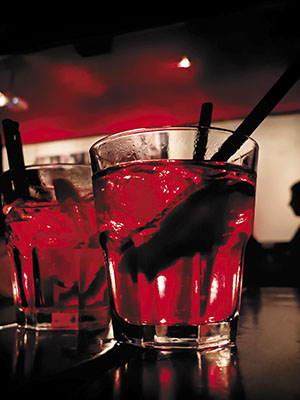
Finding Asia's favourite tipple
Lam Chi Mun, director, Diageo Bar Academy, Asia Pacific, talks about changing alcohol preferences in Asia and witnessing a second golden age of cocktails
Q. How is customer behaviour different in different countries?
Customers in most parts of the Western world have a different preference than what we have in Asia. Most Asians would prefer something with a little bit more sweetness to it, whereas Europeans and Americans prefer something less sweet.
Currently, there is the whiskey craze among Asian customers. If you visit cocktail bars in the West, they are a little more open to a wider range of liquors.
But having said that, a lot of spirits that we are consuming in the East are of Western origin, and therefore more embedded in the Western culture. For instance, vermouth, which is normally associated with Asian drinking, is usually used by Westerners who have it as a digestive, or after dinner.
In Asia, we don’t have a lot of liquors widely available as part of our culture. But people are travelling more, they have more disposable income, and are beginning to recognise that there are a lot of options. They appreciate more diversity in their drinks. I am not saying we are there yet, but in a lot of Asian countries you will see many cocktail bars sprouting, craft bartenders making drinks with twists and new ingredients, and they are getting a very good response.
Q. What do Indian customers prefer?
I don’t know India well enough, but I do know India is generally a whiskey-drinking country. However, I have seen some young bartenders being innovative and creative, working with new ingredients and methods. And bars usually have a very young crowd, which is great. They are experimental and try out new things. Due to the size of the market itself, it may take a while longer [for a trend to be established], but in the major cities, the journey has begun.
Q. Do you see local ingredients being used to make cocktails in India?
The revival of craft cocktails is taking place in the West, and in Asia we are catching up. Bartenders are revisiting the classic cocktails of the 1800s, and are using newer, and different, ingredients to give a twist to the classic recipe itself. They are also discovering Asian flavours and are including these in their drinks. Bars in London would be using Asian spices like cinnamon, anise and nutmeg.
And that’s great for India, where all these spices are easily available. I have seen bartenders in India incorporate some of these flavours, like adding spiciness to cocktails. I guess the challenge would be to find the right balance and that will take some time. This is because a lot of bartenders in India are young, and also because of the large scale of the market and the diversity of the India palate; you can’t say that there is just one taste that Indians like.
Q. How are classic cocktails being revived?
For example, the Negroni is a cocktail that comprises three ingredients—gin, sweet vermouth and Campari. It has been a favourite of bartenders and that has seen a lot of interest. Although it is such a simple cocktail, there has been a lot of innovation around it. There are different gins that you can use, different kinds of vermouths, and different kinds of bitters. You can even put this cocktail through a barrel and re-age it to soften the flavours.
Q. How are cocktails re-aged?
Some cocktails in which there are no ingredients with a short lifespan—like Negroni, which does not have a fresh ingredient—can actually be aged again in wooden barrels. This imparts more flavours—depending on the kind of oak barrel you use, like in the case of cognac or wine or bourbon—and also rounds off the flavours already existing in the cocktail. The duration of re-ageing depends on the weather and the ageing conditions… maybe from a couple of weeks up to a few months. Re-ageing of cocktails is a trend that has been there for a couple of years in the West, and it has crept up in Asia. I have seen bars in Singapore doing it.
Q. What would be your recommendation for an evening out with friends, or for a dinner?
For dinner, we have gotten used to having wine that we pair with our food. In this second golden age of cocktails and spirits, I would recommend that we go past the wines and beers. In the interest of doing something new, we would recommend cocktails that are great for pre-dinner. And I am not talking about Martinis! I’d go for drinks that are light and a bit bubbly. Even a simple Whiskey Highball works well: It could be smoky whiskey with soda water and a dash of bitters, and a twist of lemon or orange. It makes a great aperitif.
It could be a cocktail like Whiskey Sour, which is slightly smoky whiskey with fresh lime juice and, depending on where you come from, a dash of egg white. And a dash of bitter. Just shake it up nicely and it will have a frothy head. It’s very nice—acidic and refreshing.
During dinner, you could just pair your food with a rich whiskey like Talisker that goes very well with meat. Also a sweet sherry whiskey could be paired with a nice dessert.
Q. Different courses of Western food are often paired with different kinds of alcohol. In Asia, where food is traditionally not served in courses, how would you pick your alcohol?
The idea of having different beverages with different courses of your meal is something that exists only in fine-dining restaurants and fancy dinners. It is also applicable for Asia, in fine-dining restaurants. However, for the everyday meal, even if you are in Italy or France, they don’t do that. So, it generally is one wine, or a maximum of two, to go with dinner. Typically, an Italian household would have a white wine to start off with, and a red wine for the rest of the evening.
In Asia, we see something slightly acidic and bubbly to start off with and another beverage for the rest of the evening. In most cases, that would be it. Of course in the fine-dining context, there would be this course-matching thing.
But where picking your beverage is concerned, I would say, don’t be too hung up on what people tell you. If you drink a beverage in a certain way, and you like it that way, then just go ahead. The best way to drink a beverage would be the way you like it!
(This story appears in the 08 January, 2016 issue of Forbes India. To visit our Archives, click here.)

















